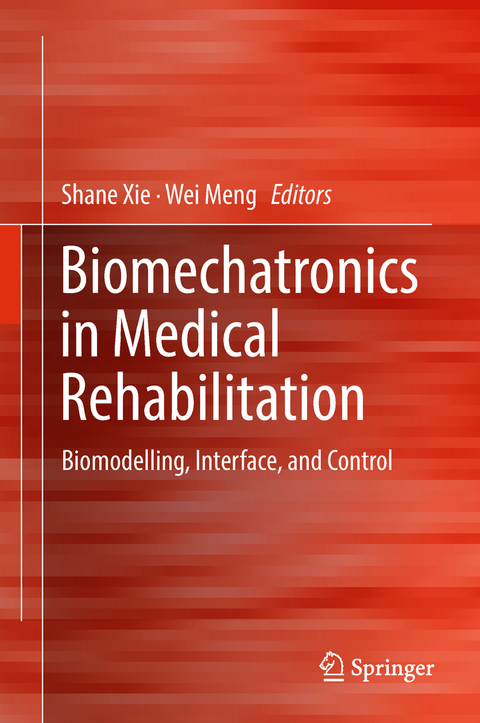Biomechatronics in Medical Rehabilitation
Springer International Publishing (Verlag)
978-3-319-52883-0 (ISBN)
Encompassing highly multidisciplinary themes in the engineering and medical fields, it presents researchers' insights into the emerging technologies and developments that are being utilized in biomechatronics for medical purposes.
Presenting a detailed analysis of five key areas in rehabilitation robotics: (i) biosignal processing; (ii) biomechanics modelling; (iii) neural and muscular interfaces; (iv) artificial actuators and devices; and (v) the use of neurological and muscular interfaces in rehabilitation robots control, the book describes the design of biomechatronic systems, the methods and control systems used and the implementation and testing in order to show how they fulfil the needs of that specific area of rehabilitation. Providing a comprehensive overview of the background of biomechatronics and details of new advances in the field, it is especially useful for researchers, academics and graduates new to the field of biomechatronics engineering, and is also of interest to researchers and clinicians in the medical field who are not engineers.
At the University of Auckland we have 15 years of experience working in biomechatronics and rehabilitation engineering. This experience is in the development and testing of robotics for rehabilitation. Biomechatronic devices we have developed include, upper and lower limb, ankle, hand, finger, wrist as well as EEG and EMG interfaces. This has led to more than 160 journal papers and conference papers.
Introduction.- State of the Art.- Signal Processing Methods for SSVEP-based BCIs.- SSVEP-Based BCI for Lower Limb Rehabilitation.- A Hybrid BCI for Gaming.- EMG-Driven Physiological Model for Upper Limb.- Exoskeleton Control Based on Neural Interface.- Muscle Force Estimation Model for Gait Rehabilitation.- Neuromuscular Model for Gait Rehabilitation.- Conclusions and Future Prospects
"The authors aims are to review their work in biomechatronics with regard to rehabilitation, to provide a book of interest to students and research in biomechatronics, and finally to introduce these methods to clinicians. ... The authors target this book at students and researchers in biomechatronics as well as clinicians in research." (Ronald J. Cotton, Doody's Book Reviews, January, 2018)
| Erscheinungsdatum | 14.02.2017 |
|---|---|
| Zusatzinfo | XVIII, 203 p. 107 illus., 93 illus. in color. |
| Verlagsort | Cham |
| Sprache | englisch |
| Maße | 155 x 235 mm |
| Themenwelt | Geisteswissenschaften ► Psychologie ► Klinische Psychologie |
| Medizin / Pharmazie ► Physiotherapie / Ergotherapie ► Orthopädie | |
| Medizin / Pharmazie ► Physiotherapie / Ergotherapie ► Rehabilitation | |
| Technik ► Umwelttechnik / Biotechnologie | |
| Schlagworte | Biomechanics Modelling • Biomechatronic Systems • biomedical engineering • Biomedical Engineering/Biotechnology • Biosignals Processing • Engineering • Engineering: general • Muscular Interfaces • Rehabilitation • Robot-assisted Training |
| ISBN-10 | 3-319-52883-1 / 3319528831 |
| ISBN-13 | 978-3-319-52883-0 / 9783319528830 |
| Zustand | Neuware |
| Haben Sie eine Frage zum Produkt? |
aus dem Bereich




